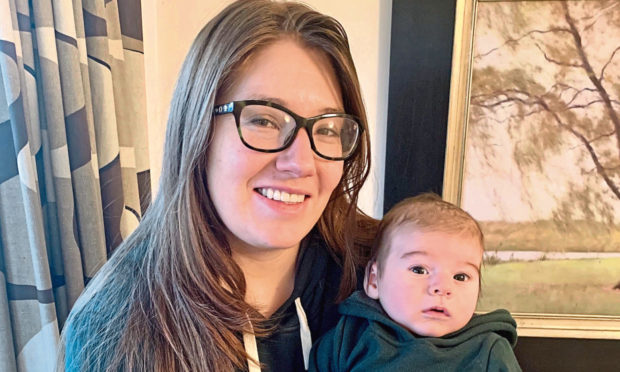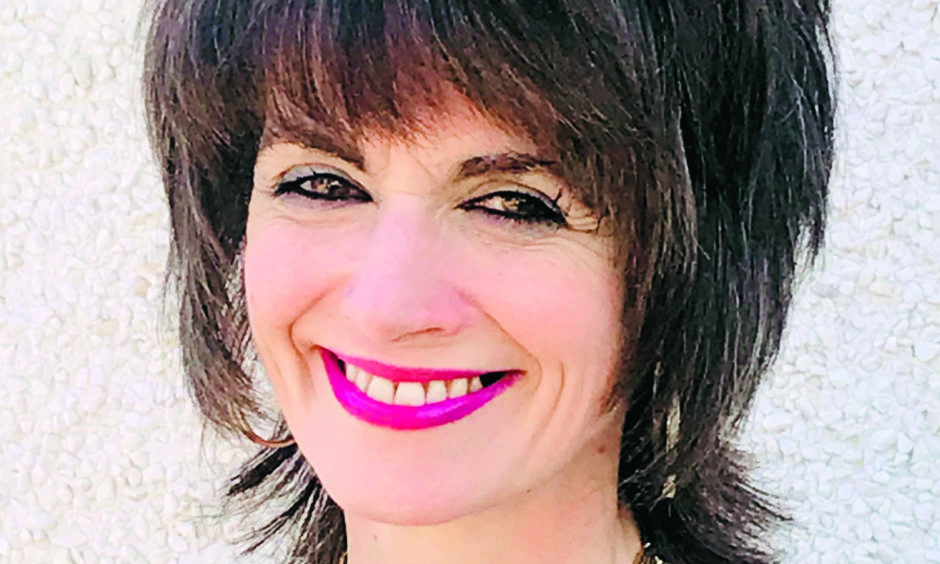Few things in life are more likely to bring out the squelchy part in human beings than a newborn infant.
Something about the unsullied, pristine possibilities of them; the odd little muffled sniffs and snuffles from deep inside swathes of cotton wool blankets; their button noses and pink cheeks and tiny, twig-like fingers emerging from padded, pastel suits with pompoms.
All of that, no doubt, influenced why, at just a few weeks old, Matheson Oat charmed his way into his mother’s appointments with everyone from dermatologists to dentists, the latter even carrying out a miniature check-up on his toothless gums.
Who could resist? Well, there’s always one. But in predicting who might tell Matheson’s mother Brittany “you can’t bring him in here”, who might remain impervious to pleas that she needed to breastfeed her baby, you are unlikely to finger the correct culprit.
Who, after all, would guess that such treatment would be dished out at the biggest NHS campus in the UK: Scotland’s flagship Queen Elizabeth hospital? And in the hospital’s World Health Organisation and Unicef-accredited maternity unit to boot. By a female, consultant gynaecologist.
To be honest, when I first heard Brittany Oat’s story, I assumed the message had been relayed inaccurately. For surely those days were gone? The days when you could be wedged on the inside seat of a bus while some leering mac-wearer spread page three of the Sun across half your space as well as his; or you walked into a garage workshop to be met with a topless pin-up licking her lips at you; but should you dare to breastfeed publicly, no matter how discreetly, you would be met with a look of affronted embarrassment and an “oy, luv, put them away, eh?”
Matheson was six weeks old when Brittany went for a vital appointment to deal with pulmonary embolisms following the birth. She was bewildered when told she couldn’t take her baby into the clinic. But she was breastfeeding. Matheson, unhelpfully impervious to appointment times, was hungry. The receptionist went to check.
A few minutes later, the doctor emerged. In her formal complaint to the hospital, Brittany wrote, “She loudly and publicly berated me. She told me I had no right to bring my baby and to come back when I was ready to have a constructive conversation.” It was left to the security guard to offer Brittany a chair to breastfeed before giving Matheson to her husband to take to the carpark.
So what do the WHO, who accredited the hospital, say about breastfeeding? That, “healthcare facilities should make every effort to protect, promote and support breastfeeding”, that they should, “highlight barriers to breastfeeding and seek ways to overcome those barriers.” And the College of Midwives, who have produced a report on infant feeding during Covid? That women and babies, “should be kept together” and that breastfeeding women should be given,“practical and psychological” support.
Big institutions are often self-protective when faced with their wrongdoing. So it was refreshing when the QE hospital responded to Brittany’s case with an unequivocal apology. “We would like to apologise to Ms Oat for her experience and will be in touch with her to discuss her experience.” It would be impressive were it not for one thing. They said exactly the same thing in November last year when Emma Urquhart and her son, Harry, faced the same problem as Brittany and Matheson. Clearly, neither training nor change happened.
The QE’s statement suggested Brittany should have been directed to designated breastfeeding areas. But that misses her point. Welcome as designated areas are, she wanted to feed Matheson AND attend her appointment. The Breastfeeding etc (Scotland) Act,2005, is clear on this matter. “If a person deliberately prevents or stops someone from feeding a child under the age of two in a public place in Scotland, they are committing a criminal offence.
If a mother is asked to move to another part of the premises, or leave the premises completely, this is also an offence.” So what is the QE’s policy? If Brittany took Matheson to a hospital appointment tomorrow, would she be allowed in the clinic?
“Yes,” said their spokesperson. “While children aren’t currently allowed in the hospital due to Covid-19 restrictions, babies breastfeeding are allowed and discretion should have been applied here.”
Welcome words, but neither Brittany nor Emma are keen on individual apologies, discretion of favours. They want the promised policy change for everyone. Let’s hope that this time, they get it.











